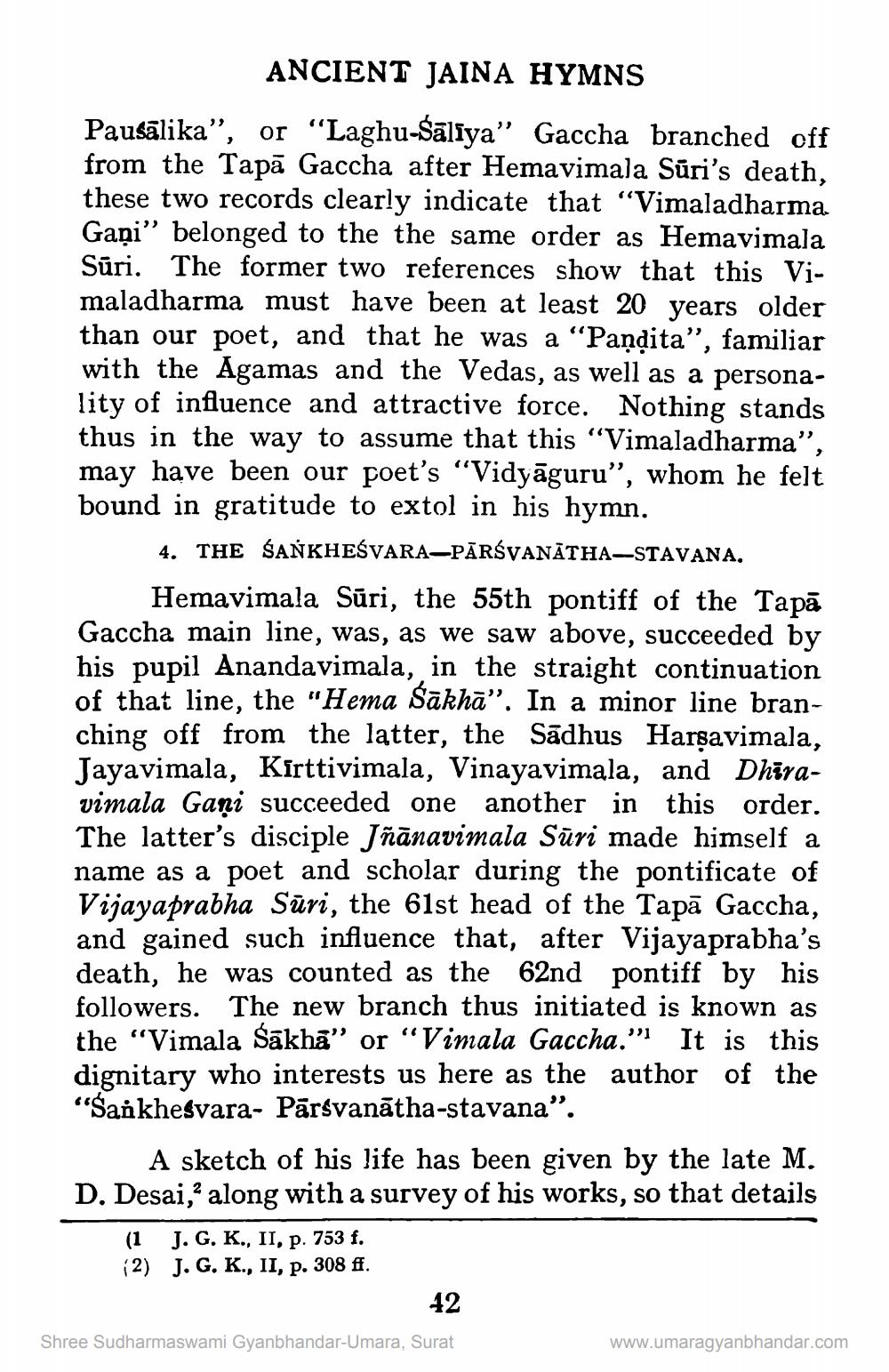________________
ANCIENT JAINA HYMNS Pausālika", or "Laghu-śālīya" Gaccha branched off from the Tapā Gaccha after Hemavimala Sūri's death, these two records clearly indicate that "Vimaladharma Gaņi" belonged to the the same order as Hemavimala Sūri. The former two references show that this Vimaladharma must have been at least 20 years older than our poet, and that he was a “Pandita", familiar with the Agamas and the Vedas, as well as a personality of influence and attractive force. Nothing stands thus in the way to assume that this “Vimaladharma”, may have been our poet's “Vidyāguru”, whom he felt bound in gratitude to extol in his hymn.
4. THE SANKHEŚVARA-PĀRŚVANĀTHA-STAVANA.
Hemavimala Sūri, the 55th pontiff of the Tapā Gaccha main line, was, as we saw above, succeeded by his pupil Anandavimala, in the straight continuation of that line, the "Hema sākhā”. In a minor line branching off from the latter, the Sadhus Harsavimala, Jayavimala, Kirttivimala, Vinayavimala, and Dhiravimala Gani succeeded one another in this order. The latter's disciple Jñanavimala Sūri made himself a name as a poet and scholar during the pontificate of Vijayaprabha Sūri, the 61st head of the Tapā Gaccha, and gained such influence that, after Vijayaprabha's death, he was counted as the 62nd pontiff by his followers. The new branch thus initiated is known as the "Vimala sākhā" or "Vimala Gaccha." It is this dignitary who interests us here as the author of the "Sankhesvara- Pārsvanātha-stavana".
A sketch of his life has been given by the late M. D. Desai, along with a survey of his works, so that details
(1 J. G. K., II, p. 753 f. (2) J. G. K., II, p. 308 f.
42
Shree Sudharmaswami Gyanbhandar-Umara, Surat
www.umaragyanbhandar.com




